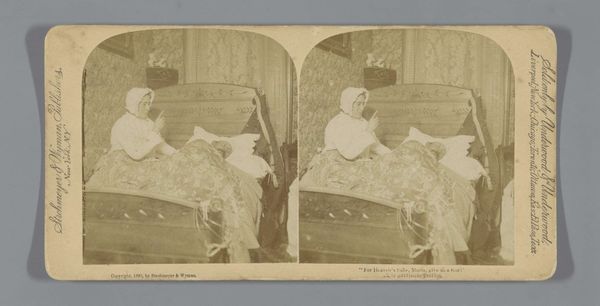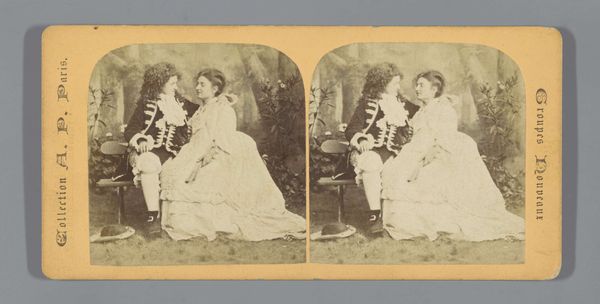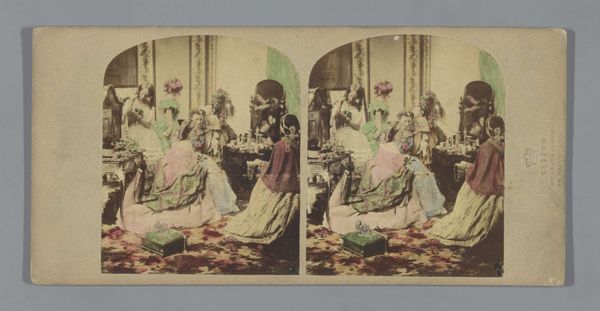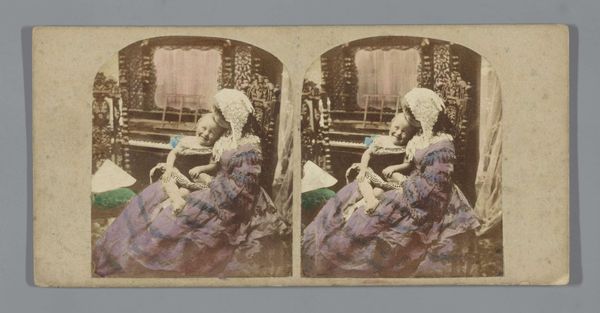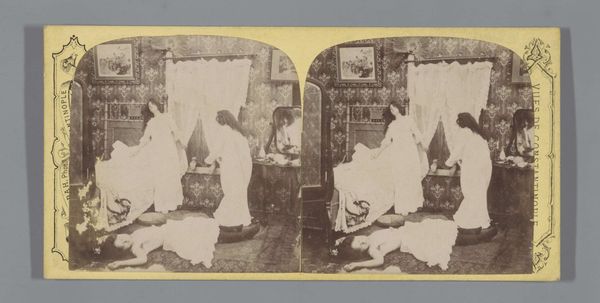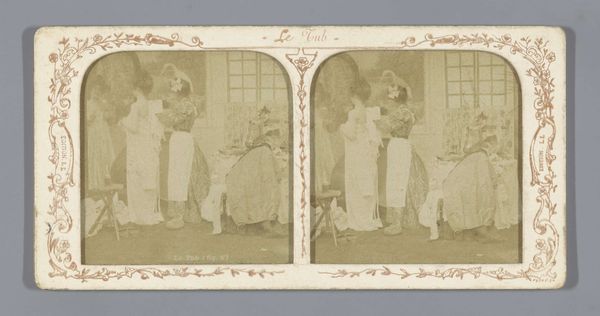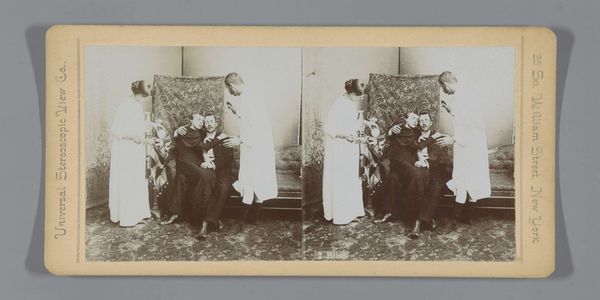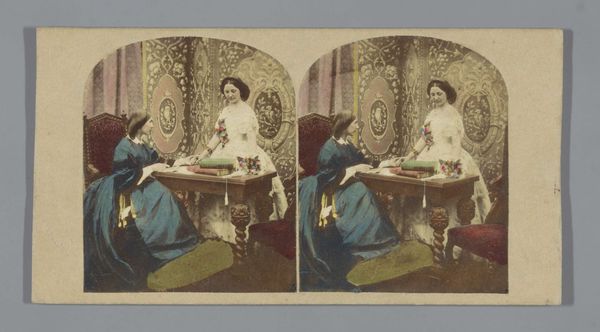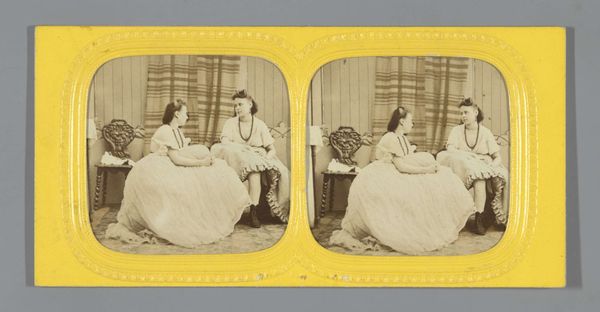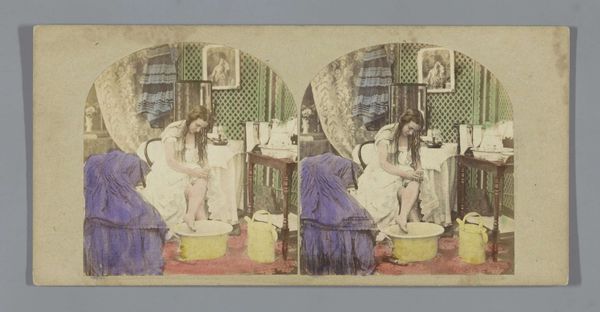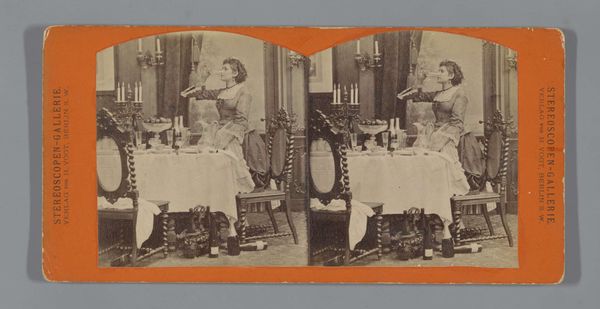
photography
#
portrait
#
pictorialism
#
light coloured
#
photography
#
genre-painting
Dimensions: height 87 mm, width 177 mm
Copyright: Rijks Museum: Open Domain
Curator: This intriguing photographic work is titled "Tafereel met een vrouw voor een kaptafel," which translates to "Scene with a woman before a dressing table." Its creation is situated sometime between 1885 and 1920. Editor: My first thought is how the material texture almost obscures the figure, it’s as if the dressing table itself has become more central than the sitter. Curator: That's a telling observation. Consider how genre paintings frequently capture scenes of everyday life; this one specifically addresses domestic rituals in light colored palettes. Think about what messages that conveys to its late 19th-century audience. Is it just documenting life or promoting a particular view of women? Editor: I'd say it pushes both directions. The photographer makes intentional aesthetic choices here. The manipulation of the chemistry and printing could be seen as attempts to push photography towards art, but it also entrenches existing social models. Curator: Precisely, Pictorialism aimed to elevate photography to the realm of high art. Yet, it often did so by adopting painting conventions—like the very composed subject. And further to the societal impact, photographic series like this would often become readily available for middle class viewership as printed multiples or as magic lantern slides for performative viewership within public spaces. Editor: But I wonder about that ‘handcrafted’ quality versus mass production. The very tactile and chemical nature of processing these photographic prints could reflect values rooted in the process itself, almost artisanal even within the means of production. Curator: Indeed. This particular image encourages contemplation about beauty standards in society. A material tension rises to the surface—as mass produced images become part of an exclusive, refined taste and cultural aesthetic. Editor: Absolutely, examining such practices helps reveal underlying power dynamics, consumerism and what actually happens on each end of artistic creation. Curator: Yes, it truly gives insight into not only the artwork itself, but the environment from which it came, a context as textured as the photographic materials before us. Editor: I agree; I will always be enthralled by those tangible methods of creation, in how its production implicates it in societal frameworks of viewing itself.
Comments
No comments
Be the first to comment and join the conversation on the ultimate creative platform.
